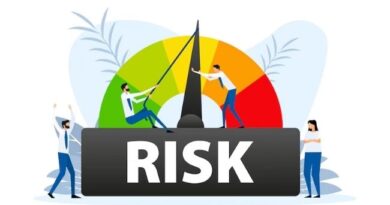Risk Identification Techniques Every Professional Should Know
Introduction
Every journey toward risk management excellence begins with one essential skill—identifying potential threats before they become problems. Risk identification is not just a task—it’s an ongoing mindset that empowers professionals to take control of uncertainty.
From strategic plans to daily operations, businesses thrive when they can spot trouble early. This guide presents the top techniques every risk-conscious professional should have in their toolkit.
The Critical Role of Risk Identification
You can’t manage what you don’t see. That’s why identifying risks early is a key differentiator between reactive and proactive organizations.
Proper risk identification:
- Reduces costly surprises
- Informs planning and resource allocation
- Enhances preparedness
- Strengthens regulatory and audit readiness
- Builds trust with stakeholders
Ultimately, it turns “what ifs” into “what’s next.”
Key Types of Risk to Identify
A well-rounded risk identification strategy should span multiple dimensions:
- Strategic: Business model weaknesses, failed innovation
- Financial: Market volatility, interest rate shifts
- Operational: Supply issues, system downtimes
- Legal/Regulatory: Non-compliance with standards
- Cybersecurity: Data loss, ransomware
- Social/Environmental: Employee unrest, natural disasters
Each category demands a unique lens and method of discovery.
1. Team Brainstorming Sessions
Description: Bringing teams together to collectively list possible risks in an open forum.
Use case: New projects, product launches, process design.
Benefits:
- Promotes creativity
- Quick and low-cost
- Inclusive and energizing
Limitations:
- May overlook niche or hidden risks
- Needs structure and facilitation to stay focused
2. SWOT + Threat Enhancement
Description: Traditional SWOT with emphasis on the “Threats” quadrant to spotlight risks.
Use case: Strategic planning and business development.
Benefits:
- Encourages balance between strengths and threats
- Connects internal and external perspectives
Limitations:
- May oversimplify or stay too broad
3. Risk Prompt Lists (Checklists)
Description: Industry-specific risk lists used to jog memory and ensure nothing is missed.
Use case: Audits, inspections, compliance reviews.
Benefits:
- Comprehensive
- Easy to use and repeat
Limitations:
- Limited to known risks
- Can create a false sense of completeness
4. Expert Consultations and Interviews
Description: Tapping into the minds of those with deep knowledge and past experience.
Use case: Complex operations, technical projects.
Benefits:
- Uncovers high-level and niche risks
- Encourages knowledge sharing
Limitations:
- Opinions can be biased
- Time-consuming to coordinate
5. The Delphi Method
Description: A structured, iterative process using surveys and feedback loops to converge expert opinion.
Use case: Long-term strategy, policy impact assessment.
Benefits:
- Balances group input with anonymity
- Great for sensitive or emerging risks
Limitations:
- Requires multiple rounds and skilled moderation
6. Root Cause and Fishbone (Ishikawa) Diagrams
Description: Cause-and-effect diagrams that break down risk origins by category.
Use case: Quality control, incident prevention, system design.
Benefits:
- Visually intuitive
- Drives discussion of deeper issues
Limitations:
- Can become complex without boundaries
7. Flowcharting and Process Visualization
Description: Mapping workflows to pinpoint bottlenecks, delays, and failure points.
Use case: Business continuity, logistics, automation planning.
Benefits:
- Highlights real-time risks in processes
- Ideal for operational planning
Limitations:
- Requires time and expertise
- May not capture abstract or strategic risks
8. Past Incident Reviews and Data Mining
Description: Analyzing historical events and near-misses to predict future risks.
Use case: Manufacturing, health and safety, finance.
Benefits:
- Grounded in actual experience
- Excellent for recurring issues
Limitations:
- Doesn’t address emerging threats
- Can lead to reactive strategies
9. Cross-Functional Risk Workshops
Description: Facilitated sessions that bring together teams from across the organization to co-identify risks.
Use case: Enterprise-wide projects, policy changes.
Benefits:
- Holistic, diverse perspectives
- Supports organizational alignment
Limitations:
- May require external facilitation
- Scheduling can be difficult
10. Scenario Planning and Simulations
Description: “What if” modeling that explores potential disruptions through storytelling and data.
Use case: Crisis response, long-range forecasting.
Benefits:
- Builds agility
- Enhances leadership readiness
Limitations:
- Needs strong research base
- Subjective outcomes without data
Best Practice: Combine Techniques
There’s no one-size-fits-all tool. Seasoned professionals often mix:
- Checklists for quick scans
- Interviews for depth
- Workshops for cross-team buy-in
- Scenarios for long-term strategy
The most effective identification plans are layered, collaborative, and regularly updated.
Explore Best Online Courses to Learn Risk Management
If you’re new to risk management or looking to deepen your expertise, there’s no better time to start than now. Learning from industry experts can help you build a strong foundation and gain certifications that set you apart in the job market.
At www.smartonlinecourse.com, in collaboration with the Risk Management Association of India (www.rmaindia.org), you can explore a range of self-paced, affordable online courses designed for both beginners and professionals. These courses are tailored to real-world needs, taught by experts, and designed for flexible learning.
Visit www.smartonlinecourse.com to explore more!
Email: [email protected]
Conclusion
Risk identification is where prevention begins. By knowing which techniques to apply—and when—professionals can reduce guesswork and increase clarity. The more skillfully we identify risks, the more powerfully we can manage them.
Master these tools, adapt them to your environment, and you’ll lead your organization toward smarter decisions and sustainable success.




